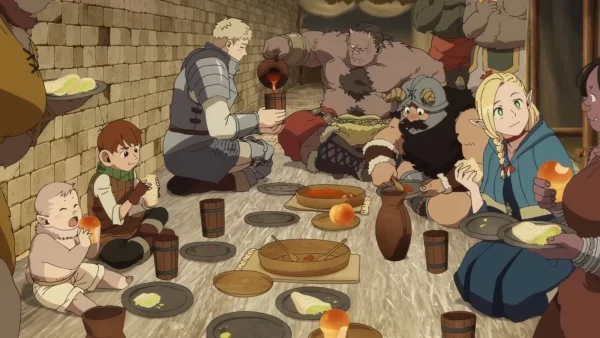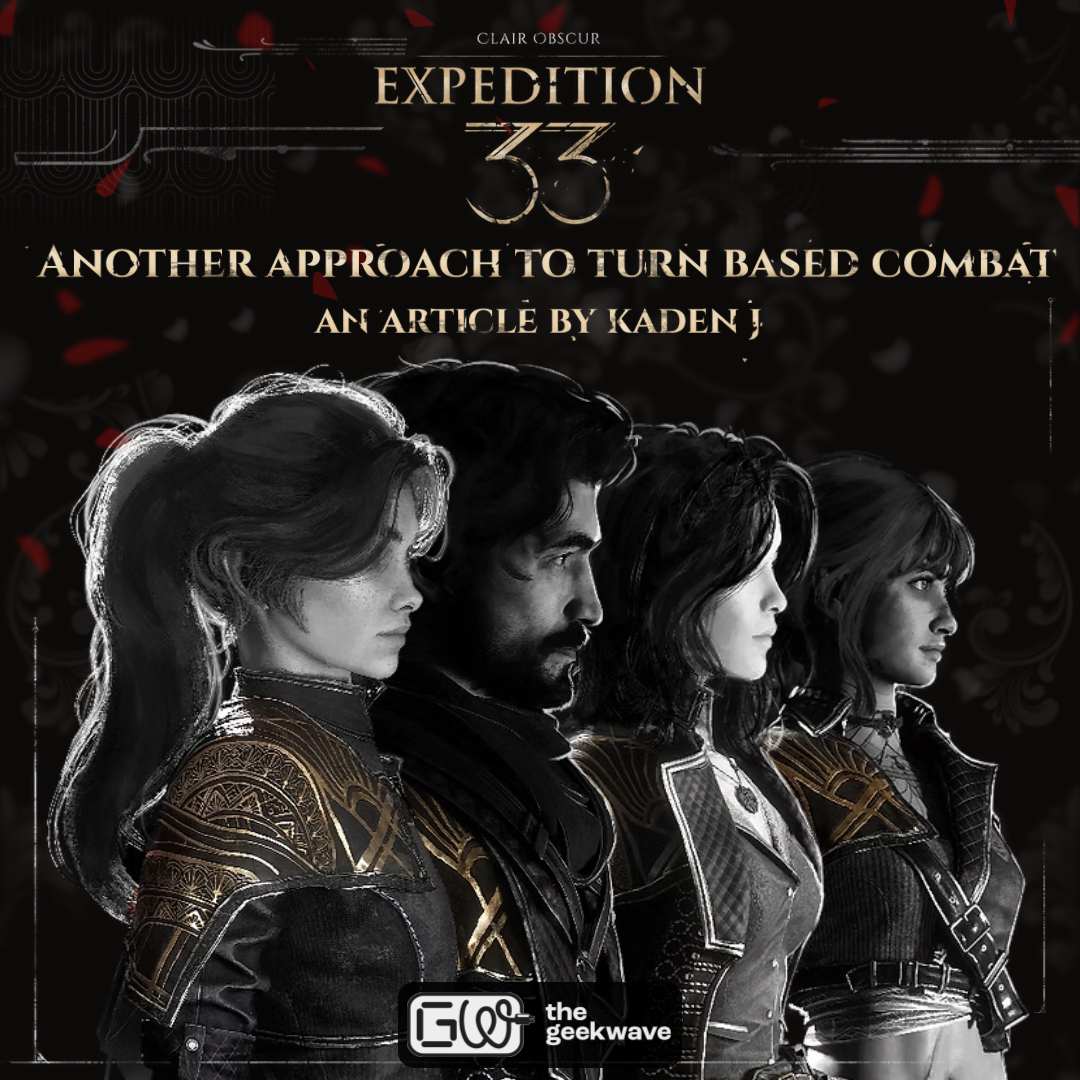The Duality of Food
Food, like many things, can facilitate the fostering of community or be a source of control to those very same individuals. The function that food serves in society varies depending on who is making it, for whom, and out of what? For example, it is common for people to have recipes and dishes that run in their family or that their family made often for meals. By having the same dish at the table, you and your family gain a point of connection. So when you and your mom joke about the sheer amount of mayonnaise that your grandma uses in her food (especially her salads), it has the ability to bring you together.
However, food can also be used as a way to dominate. The gathering of ingredients can be a form of control, typically when it concerns the environment, if it’s a plant or a creature. Hunting is a skill, and it hinges on one’s ability to kill as a way to assert superiority and power. A kill can be a badge of pride and mastery as much as it can be a necessity for some. So is gathering, as one has the power to decide what to harvest and use from the flora and fauna that surrounds them.

But these acts are often not for nothing, and the domination inherent in them is solidified through the consumption of what was once alive. Consuming food allows you to make use of it in a practical way. Food is energy and when you don’t have enough, you sink lower in the food chain and put yourself at risk of being consumed instead.
Dungeon Meshi, or Delicious in Dungeon if you prefer the English translation of the title (I don’t), is an anime based off of a manga series of the same name by Ryoko Kui. It grapples heavily with the relationship that food has with the people who eat it and the environment from whence it comes from. This article will attempt to point out some of the places where this dichotomy in the role of food is present within the series and thus will discuss the first season of the show in its entirety. Prepare yourself accordingly.
Domination
It is fairly clear where domination is present in this anime, I mean the premise kind of depends on it. For the most part they have to physically fight or outsmart the monsters in order to defeat them. But this mentality is also present within the overarching goals that they have: first to kill the red dragon so they can resurrect Falin, and their later plan to defeat the Mad Mage that rules the dungeon.
The Living Armor plays into this in a fascinating way. As Laios reveals, the Living Armor are the cause for his very first death in the dungeon and are a bit of an enigma in terms of how they function (and how they might taste), thus interacting with them holds a level of discomfort for him. Facing them again, this time as a more seasoned adventurer but with a bigger group of people that he cares about and has to protect, serves to show how he has grown through time. Laios’ wealth of knowledge when it comes to monsters and their habits is what ends up giving him the ability to finally defeat the Living Armor. Then, in an absolute power move, he takes the sword from the armor, cracks the living armor shells, and proceeds to consume the cooked creature with the rest of his party.

While this specific monster battle was more personal to Laios, it does well to show the process of overcoming something, incorporating it into their lives by consuming it, and finally using it as fuel to repeat the process over again. We see how vulnerable someone can make themselves when they don’t eat well. Shuro and by extension, his companions, neglects everything else in pursuit of Falin but ends up falling short in comparison to Laios’ group that figured by taking care of themselves, they would be more equipped to actually save her.
However, the anime hammers home the fact that the ability to eat is something that a creature has to earn through displays of power and control of the situation, whether via cunning or strength. Falin, before her resurrection, serves as a reminder to the party that they are not outside of the food chain. They need to partake in the constant power struggle and win in order to survive. And when Falin is eventually brought after the party kills the Red Dragon, they cook it up really nice and eat the thing that consumed her, they do to it what it did to them in an act of domination and defiance (even if some of them initially had qualms about it).

Moreover, Falin is deeply tied to the power struggle that is the dungeon as the Mad Mage is able to exert power over her because she was eaten, digested, and used up by the dragon, kind of making her a part of the dungeon. Now she is forced to continue the mission in the Red Dragon’s stead, putting herself aside, as is shown when the Mad Mage takes the walking mushroom out of her hands despite how much Falin wants to try it (likely due to the fond stories that the party told her about their dungeon food escapades). And the party’s solution builds upon these concepts of domination as they hypothesized that eating the dragon parts of Falin and putting them into a ton of separate stomachs to be digested and used will free her from the Mad Mage’s grasp, allowing her to be herself once more.
Care
As much as food is used as a form of control, it also is a point of connection for the party and various minor characters they meet along the way. I believe that this is best exemplified by Senshi! Senshi being willing to be vulnerable with everyone in the last couple episodes showcases how much the party has bonded from the very beginning of their journey to save Falin. And I think that it is directly tied to them breaking bread together, but more specifically, how they prepare their food and why.

We see throughout the series that adventurers typically bring provisions like bread, dried meats, and wine; Classic rations that can last for a while as they traverse the dungeon. They know exactly what they are going to eat next and it is often not something that takes significant labor or multiple people working together to cook. Eating becomes a chore one must do in order to stay alive until they return to the surface where they can enjoy real food again. And it makes sense! It’s pragmatic. Why would you waste precious resources, like time and energy, to cook a good meal when just shoving bland food down is infinitely easier, cheaper, and allows you to focus more on not dying in the dungeon?
This difference I think is highlighted well when we look at Laios’ party before they fell to the Red Dragon and after. Even though the original group had worked well together and there were those who were close within the group, once the going got tough roughly half of them high tailed it out of there. On the other hand, characters that joined Laios’ party afterwards, like Senshi and Izutsumi, bonded pretty quickly with the group and were willing to put themselves at risk for their objectively insane mission. They had their own motivations, of course, but they were still willing to stick out their necks for people they had not known for that long. Why?
I believe it’s because they made food together and ate it as a group. Senshi teaching the others how to cook brings them together and gives the other members of the party a chance to learn that cooking is enjoyable and that their skills can almost always be put to use in unexpected ways. Like when Chilchuck utilized his skill for dismantling traps to create a cooking station for Senshi. It also serves as a point of conversation as they speculate about how different monsters taste, types of food, and preparation methods.

Almost every single meal required them to rely on each other and take each other’s preferences into consideration, not only when they were getting the ingredients but when they were cooking the food itself. We can see this with the Orcs as well! The second they were introduced they killed essentially a tavern of people, but spared Laios’ group because Seshi sold them vegetables. They warmed up to the rest of the party and became willing to let them go because they made and shared food with each other, the process of kneading bread giving them a chance to talk and consider the others perspective and decide what really mattered to them.
Food is not only a bonding exercise, but can be the many way that characters convey affection, like Maizuru, Shuro’s educator and retainer, and, surprise surprise, Falin. Maizuru adores Shuro and she is very proud of the fact that he would always eat food that she made for him because it means not only that he cares about her, but that she has the ability to take care of him when others can’t. While Maizuru puts love into the making of the food; Falin puts more focus on finding stuff for people she cares about to try and sharing a meal together as we discover in the final episode of the season. It doesn’t seem to matter as much what they are eating as long as they are doing it together.
Dungeon food, oh Dungeon Food
All in all, I believe that Dungeon Meshi does a wonderful job at walking the tightrope of food as a method of expressing affection and control throughout the series. Especially because the very same foods can often be used as examples of both. It’s a beautiful look at what it means to eat and an interesting meditation on fantasy adventure tropes. I’m sure there are a ton more moments that would have been wonderful examples for this dichotomy, however, this essay, like many things, must end at some point.

Food is a vital part of living, in stories and in the real world, and that’s what allows it to be used not only as a weapon against others, but as a physical manifestation of the care we put in for the people we love. Dungeon Meshi beautifully blends both of these seemingly discrete realities into every single dish.















